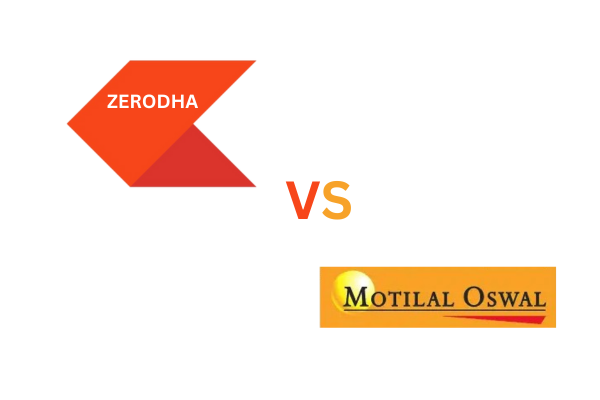The National Stock Exchange (NSE) plays a crucial role in shaping India’s financial ecosystem. As the largest and most advanced stock exchange in the country, the National Stock Exchange offers a transparent, efficient, and technology-driven platform for trading equities, derivatives, and more. It has revolutionized how investors access the markets, making investing faster, safer, and more accessible. Whether you’re a beginner or a seasoned investor, understanding the National Stock Exchange is essential for making informed financial decisions. This article explores the top reasons investors prefer India’s National Stock Exchange and why it continues to lead the way in market innovation.
Table of Contents
1. History and Foundation of the National Stock Exchange
The National Stock Exchange of India Limited (NSE) was established in 1992, with a mission to bring transparency, speed, and reliability to Indian financial markets. Prior to its inception, most stock trading in India was done on regional exchanges, which often lacked transparency and regulatory control.
NSE was the first dematerialized electronic exchange in India, a revolutionary step that eliminated the need for paper-based share certificates and manual trading processes. It began operations in 1994 and quickly gained popularity for its robust infrastructure and governance.
2. Structure of the National Stock Exchange
The National Stock Exchange is divided into several key segments:

- Capital Market Segment: For equities and convertible debentures.
- Futures & Options (F&O) Segment: For trading derivatives.
- Currency Derivatives Segment: For foreign exchange derivatives.
- Debt Market Segment: For government and corporate bonds.
Each segment operates under strict regulatory norms to ensure fair trading practices. The NSE uses an advanced electronic limit order book to match buy and sell orders in real-time.
3. Key Indices on the National Stock Exchange
One of the most recognized components of the NSE is its benchmark index – the NIFTY 50. This index represents the top 50 companies listed on the exchange based on market capitalization and liquidity.
Other notable indices include:
- NIFTY Next 50
- NIFTY Bank
- NIFTY IT
- NIFTY FMCG
- NIFTY Midcap 100
These indices help investors and fund managers track the performance of specific sectors or segments of the economy.
4. Advantages of Investing Through the National Stock Exchange
a) High Liquidity

The NSE is the most liquid exchange in India. High liquidity ensures that buyers and sellers can execute trades quickly without major price changes.
b) Transparency and Fair Pricing
All trading activity is electronically recorded, and price discovery is entirely market-driven. This minimizes the chances of price manipulation.
c) Wide Access
Thanks to digital brokers and online platforms, retail investors can access the NSE from anywhere in India.
d) Safety and Regulation
Regulated by SEBI, the NSE ensures the safety of investors through margin systems, surveillance mechanisms, and grievance redressal forums.
e) Diverse Investment Options
From equity shares to mutual funds, ETFs, and government bonds, the NSE allows investors to diversify their portfolio efficiently.
5. Role of Technology in the National Stock Exchange

The National Stock Exchange is known for its tech-forward approach. The exchange operates using a fully automated screen-based trading system, which ensures fast, reliable order execution. It has also adopted high-frequency trading (HFT) and algorithmic trading, enabling institutions and retail traders to use advanced strategies.
The NSE’s technological prowess makes it one of the most reliable stock exchanges in Asia.
6. How to Start Investing in the National Stock Exchange
To trade on the NSE, follow these simple steps:

- Open a Demat and Trading Account: Choose a SEBI-registered broker like Zerodha, Groww, or ICICI Direct.
- Complete KYC Verification: Submit PAN card, Aadhaar, and bank details.
- Fund Your Trading Account: Transfer money from your bank to your trading account.
- Start Investing: Use the trading platform to buy shares listed on the National Stock Exchange.
Tip: Begin with well-known NIFTY 50 companies if you’re new to the stock market.
7. NSE vs. BSE: Which One Is Better for Investors?
While both the NSE and the Bombay Stock Exchange (BSE) serve Indian investors, NSE is generally preferred for the following reasons:
| Feature | NSE | BSE |
|---|---|---|
| Market Share | Highest in India | Second Largest |
| Technology | More Advanced | Traditional, improving |
| Liquidity | Higher Liquidity in F&O and Stocks | Comparatively Lower |
| Popular Index | NIFTY 50 | SENSEX |
So, if you’re looking for higher volume, faster execution, and better tools, the National Stock Exchange is usually the preferred choice.
8. Challenges Faced by the National Stock Exchange
Despite its many strengths, the NSE is not without challenges:
- Technical Glitches: Rare, but any outage can impact millions of trades.
- Market Manipulation Risks: Although regulated, bad actors can attempt price rigging or insider trading.
- Global Uncertainty: International events like oil prices, wars, or inflation can affect investor confidence in NSE-listed stocks.
However, constant upgrades and SEBI’s oversight keep these risks minimal.
9. National Stock Exchange and Financial Education
One of the NSE’s lesser-known strengths is its emphasis on investor education. Through its portal NSE Academy, it offers:
- Free & paid courses on stock market investing
- Webinars with market experts
- Certifications for professionals
This helps both beginners and seasoned traders sharpen their knowledge and skills.
10. Future of the National Stock Exchange
The future of the National Stock Exchange looks promising. With the Indian economy on a growth trajectory and increasing retail participation in the markets, NSE is poised to become even more influential.
Key trends to watch include:
- Rise of ESG Investing
- More IPOs from tech and startup sectors
- Growing popularity of ETFs and passive investing
- Integration of AI and machine learning in trading analytics
As digital adoption increases, so will the role of the NSE in wealth creation across Indian households.
The national stock exchange is more than just a trading platform – it’s the financial heartbeat of India. Whether you’re a retail investor, a professional trader, or someone exploring the stock market for the first time, the national stock exchange offers a secure, transparent, and efficient environment to grow your investments.
From its technological advancements to its regulatory integrity, the national stock exchange has set a global standard for modern stock markets. Its commitment to financial literacy, innovation, and investor protection makes it a vital part of India’s economic landscape.
So, if you’re planning to take the first step toward investing, make sure the national stock exchange is your starting point. With the right strategy and informed decisions, your financial journey can truly begin here.
Frequently Asked Questions (FAQs)
Q1: Why NSE price is higher than BSE?
NSE prices are often higher than BSE due to greater liquidity, faster order execution, and higher trading volumes, which can lead to quicker price movements based on supply and demand dynamics.
Q2: Is NSE owned by the government?
No, It is not owned by the government. It is a privately owned entity, established by leading financial institutions, and regulated by SEBI, India’s market watchdog.
Q3: Which is the oldest stock exchange in India?
The Bombay Stock Exchange (BSE) is the oldest stock exchange in India, established in 1875. It is also the oldest in Asia and remains a major trading platform today.
Q4: Which is the oldest broker in India?
Dolat Capital is considered one of the oldest stockbroking firms in India. However, Motilal Oswal and Angel One (formerly Angel Broking) are also among the longstanding, well-known brokers.
Q5: What is the main objective of NSE?
The main objective of the National Stock Exchange (NSE) is to provide a transparent, efficient, and accessible trading platform that ensures fair price discovery and supports the growth of India’s financial markets.





